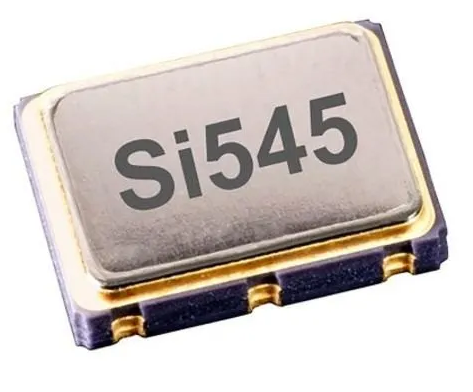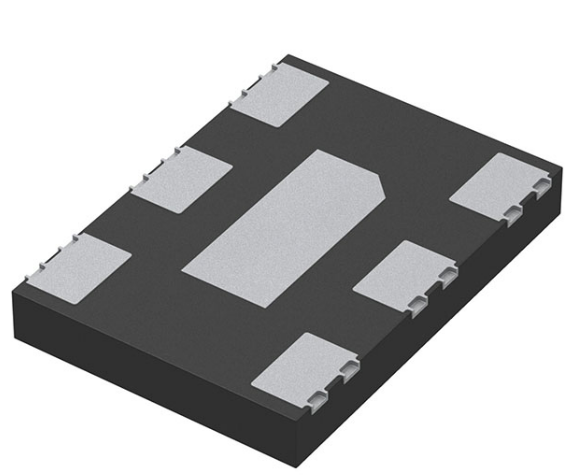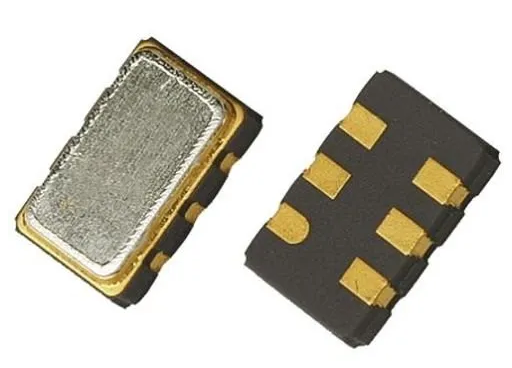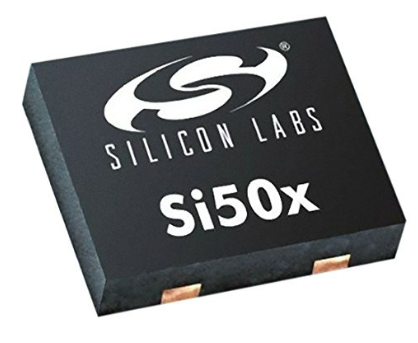The most common type of silicon oscillator is the silicon crystal oscillator, where a silicon crystal resonator provides the frequency stability for the oscillator circuit. Quartz crystals are commonly used as the resonator in these oscillators. Silicon crystal oscillators are widely used in electronic devices, including microcontrollers, microprocessors, and various digital systems, where precise and stable timing is crucial.
Silicon-based oscillators offer advantages such as small size, low cost, and good frequency stability. They play a critical role in maintaining accurate timing in many electronic applications.

The popular Silicon Oscillators manufacturers
Silicon Labs: Silicon Labs is a semiconductor company that offers a variety of timing solutions, including silicon oscillators.
Microchip Technology: Microchip is known for producing a wide range of microcontrollers and integrated circuits, and they offer silicon oscillators as part of their product portfolio.
TXC Corporation: TXC is a global frequency control solution provider, and they manufacture various types of oscillators, including silicon-based ones.
SiTime (a subsidiary of MegaChips Corporation): SiTime is a provider of MEMS (Micro-Electro-Mechanical Systems) timing solutions, including silicon-based oscillators.
ON Semiconductor: ON Semiconductor is a semiconductor supplier that produces a diverse range of components, and they may offer silicon oscillators as part of their timing solutions.
Epson: Seiko Epson Corporation, commonly known as Epson, is a well-known manufacturer of electronic components, including silicon-based oscillators.

Popular silicon oscillator models
MEMS Oscillators:
SiTime MEMS Oscillators: SiTime is known for its Micro-Electro-Mechanical Systems (MEMS) oscillators, offering high performance, low jitter, and reliability.
Crystal Oscillators:
Silicon Labs Crystal Oscillators: Silicon Labs offers a range of crystal oscillators with various features and specifications.
Programmable Oscillators:
Silicon Labs Si534x: A family of programmable oscillators with a wide range of frequency options and low jitter.
Voltage-Controlled Oscillators (VCOs):
ON Semiconductor NBXDBB019LC: An example of an integrated VCO in the GHz frequency range.
Temperature-Compensated Crystal Oscillators (TCXOs):
Microchip DSC6000: A family of TCXOs with high accuracy and stability.
Oven-Controlled Crystal Oscillators (OCXOs):
Epson SG-7050CAN: An example of an OCXO with tight frequency stability.

what the silicon oscillator used for?
Clock Generation in Digital Systems:
Silicon oscillators are widely used to generate clock signals in digital systems, including microcontrollers, microprocessors, FPGAs (Field-Programmable Gate Arrays), and other digital integrated circuits. Clock signals synchronize the operations of different components within these systems.
Communication Systems:
In communication systems, silicon oscillators are used to generate carrier frequencies and clock signals for modulators and demodulators. They play a vital role in maintaining synchronization in various communication devices.
Networking Equipment:
Routers, switches, and other networking equipment use silicon oscillators to generate clock signals for data transmission and reception, ensuring the proper timing of data packets.
Consumer Electronics:
Silicon oscillators are found in various consumer electronics such as TVs, audio systems, and digital cameras, providing accurate timing for different functions and processes.
Automotive Electronics:
In automotive applications, silicon oscillators are used in engine control units, navigation systems, and various sensors, ensuring precise timing for critical functions.
Industrial Control Systems:
Industrial automation and control systems use silicon oscillators for synchronization and timing purposes in manufacturing processes, robotics, and other industrial applications.
Test and Measurement Instruments:
Silicon oscillators are employed in test and measurement instruments to provide accurate timing references for measuring equipment and data acquisition systems.
Medical Devices:
Medical equipment often relies on precise timing for data acquisition, signal processing, and communication. Silicon oscillators contribute to the accuracy and reliability of medical devices.
Military and Aerospace Systems:
Silicon oscillators are used in military and aerospace applications for radar systems, communication equipment, navigation systems, and other critical components that require precise timing.
GPS Receivers:
In GPS (Global Positioning System) receivers, silicon oscillators generate accurate timing signals for satellite signal processing, aiding in determining precise location information.

The advantages and disadvantages of silicon oscillator
Advantages of Silicon Oscillators:
Size and Integration:
Silicon oscillators can be manufactured in small sizes, allowing for integration into compact electronic devices. This is particularly advantageous in applications where space is a critical factor.
Cost-Effective:
Silicon-based components are generally cost-effective to produce, making silicon oscillators more affordable compared to some alternative technologies.
Stability and Precision:
Silicon oscillators can provide high stability and precision in terms of frequency accuracy. This is crucial in applications where precise timing is essential, such as in digital systems and communication devices.
Low Power Consumption:
Many silicon oscillator designs are optimized for low power consumption, which is beneficial for battery-operated devices and applications with power efficiency requirements.
Versatility:
Silicon oscillators can be designed to cover a wide range of frequencies, making them versatile for various applications across different industries.
Reliability:
Silicon-based components are known for their reliability, and silicon oscillators can provide consistent and reliable performance over extended periods.
Ease of Use:
Silicon oscillators are often easier to use and integrate into electronic circuits compared to some alternative oscillation technologies, simplifying the design process.

Disadvantages of Silicon Oscillators:
Temperature Sensitivity:
Silicon oscillators may exhibit some sensitivity to temperature changes, which can affect their frequency stability. Temperature-compensated designs or additional components may be necessary to address this limitation.
Jitter:
Jitter, or variations in the output signal's timing, can be a concern in some silicon oscillators. While modern designs aim to minimize jitter, it can still be a consideration in applications with stringent timing requirements.
Limited Frequency Range:
Some silicon oscillators may have limitations in terms of the frequency range they can cover. For very high-frequency applications, alternative technologies like surface acoustic wave (SAW) or bulk acoustic wave (BAW) oscillators may be preferred.
Aging:
Silicon oscillators can experience aging effects over time, leading to changes in frequency performance. This may be a consideration in applications where long-term stability is critical.
Power Supply Sensitivity:
The performance of silicon oscillators can be influenced by variations in the power supply voltage. Voltage fluctuations can impact the oscillator's frequency accuracy and stability.
Not Suitable for Extremely High Frequencies:
While silicon oscillators cover a broad frequency range, they may not be as suitable for applications requiring extremely high frequencies, where other technologies like specialized crystal oscillators or microwave oscillators might be preferred.
In summary, silicon oscillators are widely used due to their advantages in terms of size, cost, stability, and versatility. However, designers need to consider factors such as temperature sensitivity, jitter, and frequency limitations based on the specific requirements of their applications. Advancements in technology continue to address and improve upon some of these limitations.




 Need Help?
Need Help?







